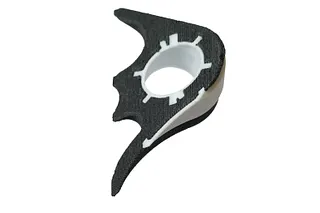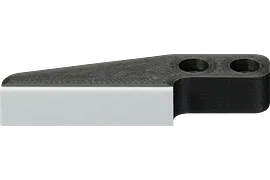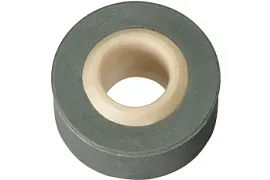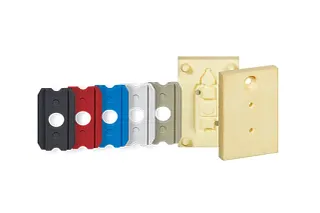Change Language :
Two-component 3D printing – for even more durable 3D printed components
What is two-component 3D printing?
Two-component parts combine the advantages of two different materials in a single part. The two can be two different filaments, a combination of 3D printing and injection moulding, or the combination of different materials such as plastic and metal.

igus® tribo-filaments have unique, outstanding wear resistance and coefficients of friction. But other 3D printing materials have been optimised for strength and rigidity. Two-component printing allows the tribo-filament to be combined with other materials within a component so as to enhance the mechanical properties without sacrificing wear resistance. Depending on requirements, the second material can be freely selected – rigid or flexible to achieve specific properties for such applications as gripper surfaces.
This creates a combination of injection molding and greater geometrical freedom without losing the mechanical properties of injection-molded parts.
Do you have an application that requires the use of two-component parts? Our 3D printing team would be happy to support you in implementing your project.
Where are two-component parts used?
What types of two-component combinations are there?
How and with what materials can iglide® tribo-filaments be combined?
Many materials are compatible and can be combined in one way or another in two-component printing. Similar filaments (such a materials with the same base polymer or similar processing temperatures) can be firmly bonded: the materials meld with one another, connecting the component's two "phases". This no longer functions when the difference between processing temperatures is too great: then one of the two materials may not remain dimensionally stable during processing or may even be subjected to damaging temperatures. To be absolutely certain of the connection, an interlocking design in which the two phases are combined so that they cannot be separated by non-destructive means is a good option.

Two-component 3D printing
Combination of tribo-filaments with fiber-reinforced or flexible filaments
- Low friction, high strength
- Wear-resistant and flexible for contact surfaces

Injection molding combined with 3D printing
Molded 3D printed parts
Allow complex injection molded components with 3D printing inserts
- Greater selection of materials, since all iglide® materials can be selected
Why 3D printing from igus?
With five decades of expertise in wear-resistant components made of self-lubricating high-performance plastics, igus® brings new capabilities to 3D printing. We offer solutions developed especially for moving applications, in which usual materials would quickly reach their limits – our plastics exhibit wear resistance of up to 50 times that of standard 3D printing plastics.
iglide® polymers and the products they are used to make are tested extensively for wear, friction, and durability in our in-house test laboratory . The abrasion resistance of 3D printed components has been proven and documented in many tests: this video shows a wear test on a sliding element of I180 tribo-filament compared to a 3D printed part of standard ABS 3D printing material.
Fast and cost-effective 3D printed injection mold parts

For two-component printing and more: print2mold, the igus® Rapid Tooling method, allows wear-resistant components from additive manufacturing quickly and easily from iglide® injection molding plastics. Just upload the 3D model to the igus® 3D printing service, select the material and quantity you want, and calculate the price. After a quick check and confirmation by our engineers, your parts will be prepared for shipment within less than ten days' time and delivered.
Contact Us
Questions or product information? Please contact:

Customer Service
Customer Service:
Phone: Monday to Friday from 8 am - 8 pm
LiveChat: 24 hours
Book a Call
Book an Appointment with a Product Expert


